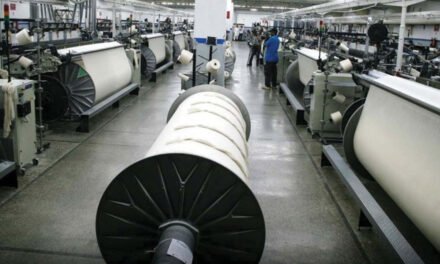
Sri Lanka’s Joint Apparel Association Forum (JAAF) recently said that the country’s apparel export industry has now fallen behind relative latecomers such as Cambodia in terms of total apparel export output, despite Sri Lanka’s traditional strength in the garments, textiles and footwear (GFT) trade in recent decades.
The reason for Sri Lanka’s declining apparel export strength, and Cambodia’s recent increases, lies in the two government’s investment policy decisions in recent years, suggest industry commentators. Sri Lanka’s JAAF recently noted that total apparel exports for the country were expected to reach a value of $5 billion in 2024. However, to reach national industry targets of $8 billion output in 2025, the association called for state policy consistency to better support growth in the apparel industry.
JAAF said that inconsistent government policies were a primary reason why Sri Lanka has now fallen behind latecomers such as Cambodia in terms of total apparel export value. In comparison, Cambodia earned nearly $9 billion from the export of textile products to international markets during the first three quarters of 2024, marking an increase of nearly 25 percent compared to the same period in 2023, according to data from Cambodia’s General Department of Customs and Excise (GDCE). The JAAF noted that due to inconsistent policies, Sri Lanka has not attracted any large-scale foreign direct investment (FDI) in the apparel sector since the late 1990s.
JAAF Deputy Chairman and Omega Line Managing Director, Felix Fernando, speaking at the recent South Asian Apparel Leadership Forum during the Colombo Design Festival, said “We need the government’s support to keep policies consistent. Moving from $5 billion to $8 billion will require more markets and more investments.” Fernando also stressed the importance of free trade agreements (FTA) in attracting new investments and expanding exports for Sri Lanka. “There’s been a back-and-forth approach in government policies on FTAs over the past two decades,” he said, urging Sri Lanka to explore new trade pacts with India, China, Japan, Australia, Canada and South Korea in order to restimulate the apparel sector.
Meanwhile, he noted that a key factor in Vietnam’s huge success in bolstering their apparel exports industry in recent periods is that they secured numerous FTAs, which allowed global buyers to enjoy significant duty concessions.
“If we establish similar FTAs,” he said, referring to Sri Lankan policy, “investors won’t need tax holidays.”
While Sri Lanka has faced a downturn in the apparel industry in recent years, other major garment and textile manufacturing countries including Cambodia, Indonesia, Malaysia, Myanmar, Thailand and Vietnam have all increased textile and clothing exports significantly since the end of restrictions due to the covid-19 pandemic.
Cambodia has a significant textiles and clothing industry and is now the sixth largest garment exporter to both the US and Europe, noted the Innovation in Textiles report. Cambodia’s apparel sector is now ripe for expansion, according to the report, and in 2023 Cambodia’s government launched the ‘Industrial Transformation Map’ to further encourage investments in modern technology, technology transfer and skills training.
Wilson Teo, President of the Singapore Fashion Council, said that the efficiency of the apparel industry across South East Asia is improving more and more, and increasingly luring global investors. “The member countries of ASEAN have collectively established a vertical and integrated supply chain with the flexibility to address different sourcing needs in terms of quantity or product type, from basic to high-end,” said Teo “Production in ASEAN is competitive in terms of cost and competency, with a developed infrastructure supporting resilient and agile services,” he added.
Alongside boosts in output for the region, sustainability has become a priority for many ASEAN companies, he added, not just in terms of regulatory compliance but also in response to demands from the brands and a growing environmental awareness among consumers.
Increasingly, the region’s manufacturers are selecting eco-friendly or responsibly sourced materials, reducing their water and energy consumption, minimising waste and implementing recycling and upcycling initiatives, he detailed. Heavy investment in new waste-water treatment and clean and renewable energy systems is also notable in the region, he added, suggesting sustainable growth will be maintained in years to come.
“All of these initiatives not only make economic sense but also demonstrate responsible production,” Teo said. “In addition, ASEAN textile manufacturers are increasingly focused on providing transparency and traceability throughout the supply chain,” added Teo.
According to Teo, Cambodia and other apparel manufacturing nation’s within ASEAN have benefited from the greater adoption of advanced machinery, automation and digitalisation, as well as closer collaboration between manufacturers and brands that includes joint research and development efforts, sharing best practices and working together to establish and meet sustainability targets and standards.
The Singapore-headquartered Ghim Li Company, for instance, has fully vertical textile production at its mill in Malaysia, and cut-and-sew garment operations in Cambodia, Indonesia, Malaysia and Vietnam. In 2023, this integrated network shipped 28 million garments globally, achieving annual sales of $116.4 million.





















